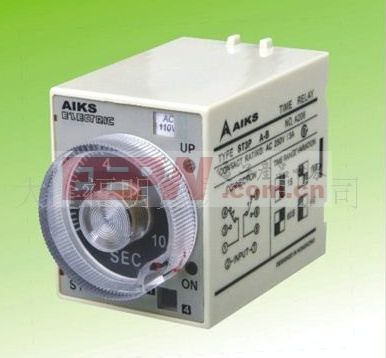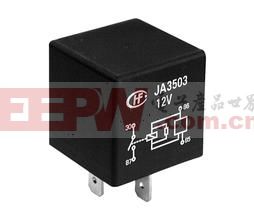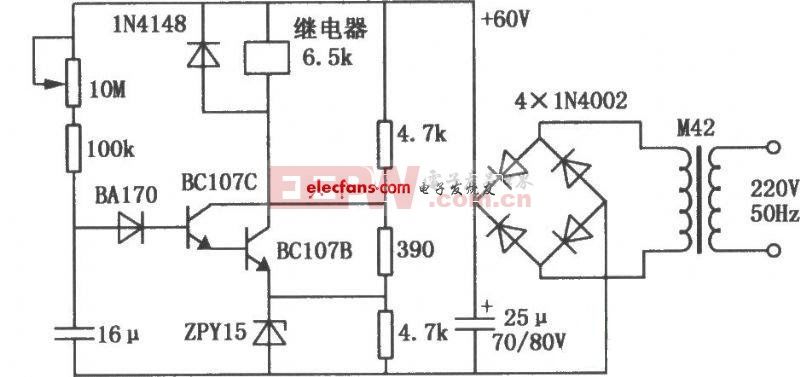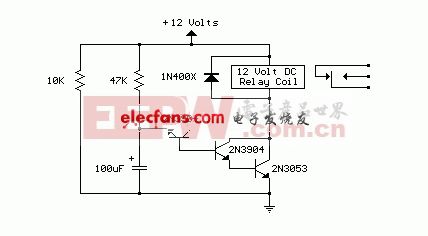The time delay relay is a type of relay that uses the principle of pulse delay to achieve a delayed on/off function. It is commonly used in relay protection and automation circuits as a timing component for delayed return after an AC instantaneous power failure.

First, the Working Principle of Time Delay Relay - Classification
Common time delay relays include air-damping, electronic, and clock types:
1. The air-damping type time delay relay delays the command execution by deflating the gas in the airbag through a small hole after the electromagnet is activated.
2. The electronic time delay relay uses an electronic circuit to delay the command execution.
3. The clock-type time delay relay uses the escapement mechanism of a clock to control the release time of a spring, offering high precision.

Second, the Working Principle of Time Delay Relay - Circuit Diagram
1. Transistor Relay Delay Circuit:
Figure 1 shows a transistor-based relay delay circuit. When the power is first turned on, the voltage across the 16μF capacitor is zero, so both transistors are off, and the relay does not activate. As the capacitor charges, after some time, the voltage reaches a high level, turning both transistors on and causing the relay to activate with a delay. The delay can last up to 60 seconds, and the duration can be adjusted using a 10MΩ resistor.

Figure 1: Transistor Relay Delay Circuit
2. Power-On Delay Relay Circuit:
This circuit uses the base breakdown voltage of a bipolar transistor. A 2N3904 transistor connected in reverse at the emitter/base junction acts as an 8V Zener diode, creating a higher turn-on voltage for a Darlington pair. Most bipolar transistors can be used, but the Zener voltage is typically around 6–9V. With a 47K resistor and a 100μF capacitor, the delay is approximately 7 seconds, which can be adjusted by changing R or C values. A larger capacitor increases the delay, while the resistor value should not exceed 47K. This circuit works with any 12V DC relay and includes a 75Ω resistor or multiple coils. The 10K resistor ensures a power-off state when the supply isn't needed, and if a bleeder resistor is already present, it helps discharge the capacitor.

Figure 2: Power-On Delay Relay Circuit
Third, the Working Principle of Time Delay Relay - Graphic Symbol

Figure 3: Graphical Symbol of the Power-On Delay Relay

Figure 4: Graphical Symbol of the Power Failure Delay Relay
Fourth, the Working Principle of the Time Delay Relay - Power Failure Delay, Power Delay, Delay Intermediate
When the rated voltage is applied, the internal relay and two time delay relays operate instantly, switching the electrical contact and de-energizing the power supply and timing circuits, improving the relay's interference resistance. When the input voltage drops significantly or disappears completely, the momentary relay returns instantly, while the two delay relays remain active. The contacts also return immediately, allowing the energy storage power supply to activate in the timing loop. The crystal oscillation generates a clock pulse, which is divided to obtain a 10ms timing pulse. The counter counts these pulses. Once the count matches the set value, the drive relay returns, completing the delay function after a power failure.

1. Power-Off Delay
(1) Introduction: The power-off delay relay is used in AC operation relay protection and automation systems as a timing component for delayed return after an instantaneous DC power failure.
(2) Technical Requirements:
1) Delay range: 0.02–5.00S, step 0.01S; 0–999S, step 1S;
2) Action value: DC operating voltage should not exceed 70% of the rated voltage; AC should not exceed 80%;
3) Contact capacity: In a DC circuit with a voltage ≤250V and current ≤1A, time constant 5ms ± 0.75ms, breaking capacity ≥50W; in an AC circuit with voltage ≤250V and current ≤5A, power factor cosφ=0.4±0.1, breaking capacity ≥500VA. Contacts should reliably operate and return at least 50,000 times under these conditions. The contacts can handle a continuous current of ≥5A.
4) Power consumption: ≤5W/7VA under rated voltage.
5) Insulation performance: Between open points, 1kV/50Hz for 1 minute; between different contact sets, 1kV/50Hz for 2 minutes. Insulation resistance ≥100MΩ measured with a 1kV megohmmeter.
2. Power-On Delay
(1) Introduction: The power-on delay relay is used in secondary circuit relay protection and automatic control loops in power systems. It functions as a delay device, providing the required delay for controlled components. The delay range is 0.02–9.99S, 0.02–99.99S, 0.02S–999H. This is a rail-mounted integrated circuit static relay with high precision, low power consumption, accurate operation time, easy setting, and wide range. It replaces traditional electromagnetic time relays and is widely used in switchgear.
(2) Technical Requirements:
1) Delay accuracy:
A. Average error of delay setting: Under reference conditions, the absolute error should not exceed 0.1% + 3ms of the set value. Average error = (5 average values - set value) / set value × 100%;
B. Delay consistency: Under reference conditions, the delay consistency should not exceed the set value (3–10ms);
C. At -10°C to 50°C, the absolute error (including consistency) of any delay setting should not exceed 0.1% + 5ms of the set value.
2) Operating voltage: Should work reliably when the voltage is ≤70% of the rated voltage.
3) Return time: For DC power supplies, the time from power cut to contact return should be ≤25ms.
4) Return voltage: When the voltage drops to ≥10% of the rated voltage, the contacts should return reliably.
5) Power consumption: ≤2.5W (4.5VA).
3. Delay Intermediate
(1) Introduction: The time delay intermediate relay is used in various protection and automatic control circuits for DC or AC operation as an auxiliary relay to increase contact number and capacity. It can be adjusted to provide either power-on or power-off delay.
(2) Technical Parameters:
1) Environmental reference conditions: Ambient temperature: 20 ± 2°C; relative humidity: 45%–75%; atmospheric pressure: 86–106 kPa;
2) Normal usage conditions: Ambient temperature: -10°C–50°C; humidity: ≤90%; pressure: 86–110 kPa; storage and transport temperature: -25°C–70°C; altitude: ≤2,500 m; surrounding environment must be non-explosive and free from corrosive gases; conductive dust concentration must not reduce insulation below acceptable limits.
3) Maximum power consumption: ≤7VA at 380VAC; ≤4VA at 220VAC.
4) Characteristic parameters: Operating range: 0.04–1S, step 0.01S; error ≤3ms; 0.1–10S, step 0.1S; error ≤3ms; power supply voltage: 220VAC, 380VAC, 110VDC, 220VDC.
5) Power supply fluctuation range: 0.8–1.15 times rated voltage.
6) Contact capacity: DC load: 250V or less, Ï„=5ms, inductive load 50W, resistive load 150W; AC load: 250V or less, 1200VA; long-term switching current: 5A.
7) Insulation resistance: Measured with a 1000V megohmmeter, ≥10MΩ between each terminal and the terminal rail.
8) Insulation withstand voltage: 2000V between terminals and terminal rail; 1000V between same group contacts; no breakdown for 1 minute.
9) Electrical life: 10,000 operations under rated load.
10) Mechanical life: 3 million operations under no load.
In summary, a power-on delay relay activates the delayed contact only after the coil is energized, and the contact resets immediately when the coil is powered off. A power-off delay relay activates the contact immediately when the coil is energized, but delays the return when the power is cut off. Delayed contacts are used for timed activation and deactivation.
Capacitor
Mall solar carport system,Mall solar carport system cost,Mall solar carport system design
Hebei Jinbiao Construction Materials Tech Corp., Ltd. , https://www.pvcarportsystem.com